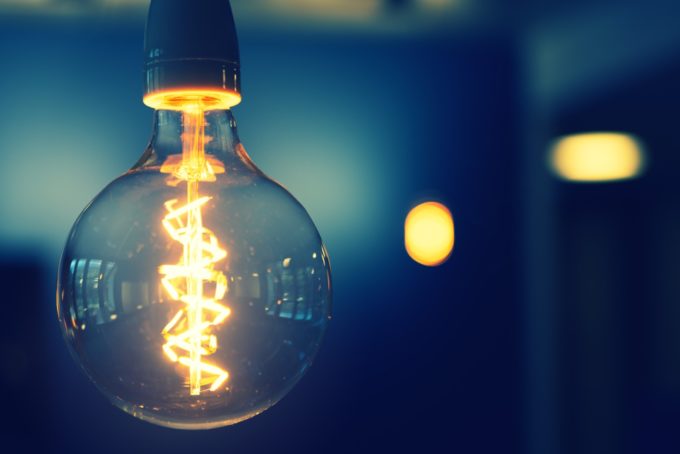Filament Light-Emitting Diodes and Products Containing Same, USITC Pub. 3401, Inv. No. 337-TA-1172, (Aug. 2019) (pending before the Administrative Law Judge).
The United States International Trade Commission (“ITC”) initiated an unfair import (Section 337) investigation pursuant to 19 U.S.C. § 1337 against Amazon, Bed Bath & Beyond, IKEA, Target, and Walmart (“the Proposed Respondents”) for alleged Filament LED patent violations. This investigation is based on the complaint filed by the Regents of the University of California (“the Regents”) on July 30, 2019.
This complaint marks practically the first time that an academic institution has appeared as a sole complainant before the ITC. According to the complaint filed with the ITC by the Regents, the purpose of this complaint extends beyond the commercial context of filament LED to “spearhead[ing] a broader, national response to the existential threat to university technology transfer that is posed by the widespread disregard for university intellectual property rights that is prevalent today.” This points to potentially broader implications arising from this investigation, since about 4,800 United States patents (corresponding to about 4% of total) are held by universities as of 2011. To commercialize these patents, more than 200 universities across the US have opened technology transfer offices. However, these efforts have borne mixed results, with about 85% of these offices not breaking even financially and about three quarters of licensing income going to the top 10% of universities as of 2012. Various reasons that fall outside of intellectual property legal enforcement have been offered for this pattern, such as concentration of blockbuster patents in a few universities and a significant portion of university patents being focused on early stage and unproven technologies. Nevertheless, a proposed contributing factor to this trend that falls within the intellectual property legal enforcement arena is the potential refusal of commercial actors to license university patents, as research that lies at the foundation of these patents is publicly available.
Regardless of the broader objective of establishing a trend of intellectual property enforcement by universities, Filament LEDs command a sizeable market by themselves. According to the Regents, Filament LED was invented by researchers at the University of California at Santa Barbara and was patented under four U.S. patents (Patent Nos. 7,781,789; 9,240,529; 9,859,464; and 10,217,916) by the Regents. Filament LEDs have only become widely available in the United States in the last 5 years, with their market size expected to reach $1 billion in 2019. They are used in a variety of industrial, commercial, and residential settings and are designed to imitate the traditional light bulbs in shape and form and emit light in all directions. One prime example of the use of filament LEDs is the vintage-style LED light bulb.
In the complaint, the Regents allege that the Proposed Respondents have engaged in unfair acts in violation of Section 337 of the Tariff Act of 1930, 19 U.S.C. § 337(a)(1)(B), through the unauthorized and unlawful importation into the United States of products that infringe one or more of the patents held by the Regents. As a result, the Regents seek a permanent limited exclusion order and a permanent cease-and-desist order to bar the entry of infringing products and prohibit the sale and distribution of these products respectively. In parallel, the Regents have been pursuing patent infringement claims in the United States District Court for the Central District of California against the Proposed Respondents that are currently pending.
The Proposed Respondents’ answers to the complaint deny that they have violated Section 337 as set out by the Regents. Moreover, four primary affirmative defenses are offered: (1) non-infringement; (2) invalidity and/or unenforceability; (3) lack of a domestic industry; and (4) public interest. Additionally, each Proposed Respondent offers additional defenses (such as express and implied licenses) based on its own specific circumstances as well. The following arguments are stipulated for the four primary affirmative defenses:
(1) The non-infringement affirmative defense: the prosecution history estoppel based on the prosecution of applications at USPTO that led to the identified patents (asserted by Walmart only) along with the doctrine of exhaustion and the Proposed Respondents’ products not having every claim limitation of any valid claim of the Regents’ patents;
(2) The invalidity and/or unenforceability affirmative defense: a plethora of U.S. and international patents that can be combined to address the same set of issues addressed in the Regents’ patents;
(3) The lack of a domestic industry defense: lack of significant investment in equipment, significant employment of labor and capital, and/or substantial investments in exploitation of the patents by the Regents;
(4) The public interest defense: conflict between grant of Regents’ demands for relief and the U.S. government’s policy of furthering consumer adoption of LED lighting (asserted by Walmart and Target only).
Administrative Law Judge David Shaw been assigned to this investigation with a target date of December 2020. On September 16, 2019, Administrative Law Judge Shaw issued a Discovery Statement Order to proceed further with this investigation.
